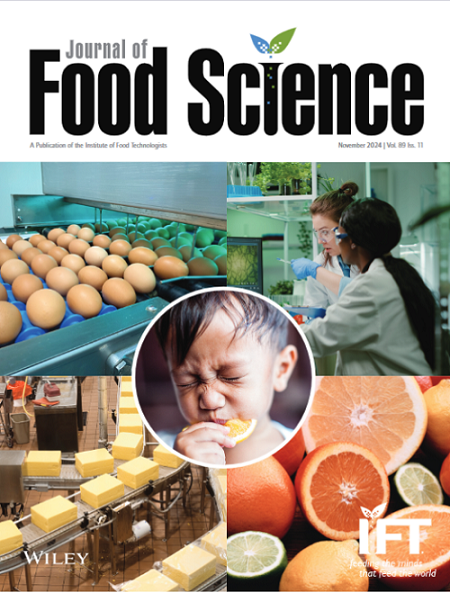Metabolite and Sensory Profiling of Microwave-Assisted and Ultrasonic-Assisted Alkalized Cocoa Powders
Abstract
Microwave (MA)- and ultrasonic-assisted (UA) alkalization were applied to cocoa powders for 5, 10, and 15 min to investigate their effects on metabolite composition, sensory profile, and consumer liking. Widely targeted gas chromatography–mass spectrometry (GC-MS) analysis showed alkalization altered metabolite profiles: Natural cocoa powders contained more amino acids, sugars, and flavonoids, while alkalized samples had elevated organic acids. Compared to conventionally alkalized (CA) samples, only UA15 showed a significant increase in 3,4-dihydroxybenzoic acid. UA15 also exhibited the greatest reduction in reducing sugars and hydrophobic amino acids, specific precursors for cocoa aroma via the Maillard reaction. Headspace solid-phase microextraction GC-MS revealed that alkalized samples contained more Maillard-reaction-derived aroma-active compounds, including aldehydes, esters, ketones, pyrazines, and furan, with UA15 showing the highest levels, suggesting enhanced Maillard activity. MA10 and UA5 had elevated n-hexadecane and 2,3-pentanedione, suggesting enhanced release and fragmentation–recombination of sugar-derived intermediates. Rate-All-That-Apply results showed alkalized samples were associated with sweeter and more intense cocoa flavor. Hedonic test results indicated consumers preferred alkalized samples over natural cocoa powder, which was perceived as overly acidic and burnt. However, differences in sensory attributes and overall liking among the alkalized samples were not significant and showed high variability, suggesting that consumer panelists cannot detect subtle sensory differences between CA, MA, and UA samples. Future studies should focus on determining the appropriate MA and UA treatment conditions to produce cocoa powders that better meet consumer preferences. This is the first report on MA and UA alkalization effects on cocoa powder quality and offers valuable insights for product development using hybrid alkalization processes.
Practical Applications
The changes in the sensory and chemical profiles of cocoa powders upon microwave-assisted and ultrasonic-assisted alkalization were revealed. This information on the effect of the hybrid alkalization process on food quality and consumer preference of the cocoa powders is of value for consideration in cocoa powder processing and development.



 求助内容:
求助内容: 应助结果提醒方式:
应助结果提醒方式:


